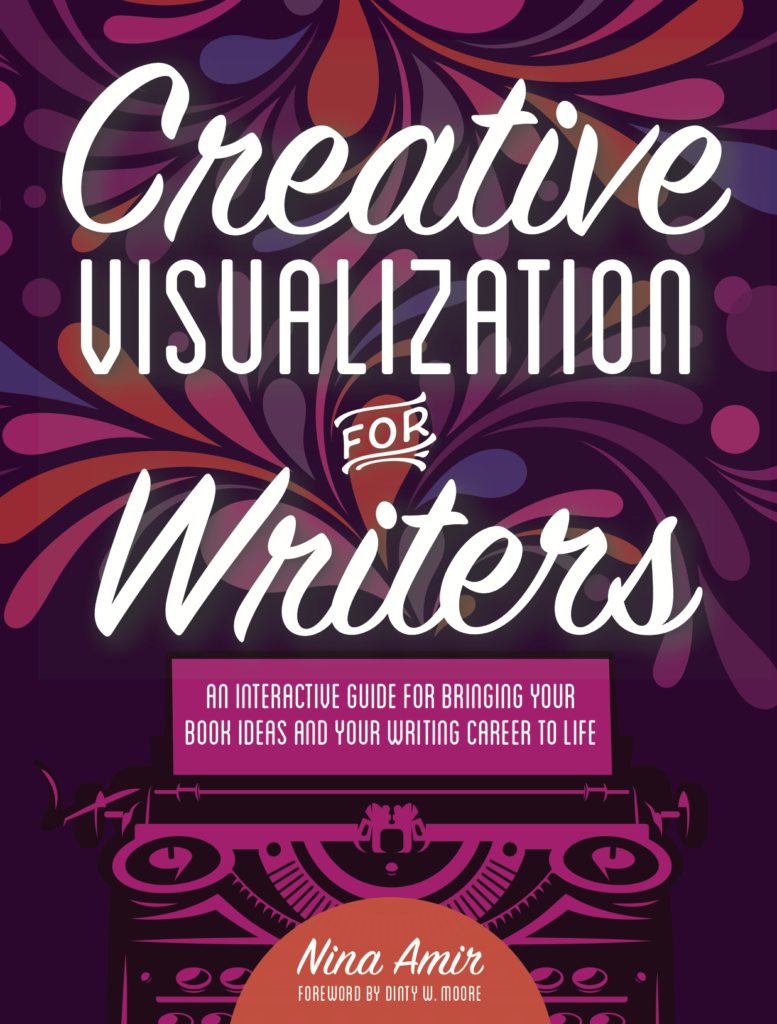Publishing is all business. You have to deal with business plans or proposals, contracts, negotiations, promotion, platform, a publishing company—someone else’s or your own, marketability, taxes, and, of course, sales and royalties.
But it’s not all business.
Take, for instance, the act of writing, which is creative by nature. Writing involves ideation, character or content development, plot, structure, and imagination. It also requires problem solving abilities, which rely on creativity.
Publishing requires a unique blend of business and creativity.
Business Takeover
For many years, I’ve stressed the cold, hard business side of becoming an author. After all, tackling these tasks are necessary if you want to produce books that sell.
However, it’s easy to end up felling as if the business side of publishing has taken over your writing life. Believe me, I understand! You end up not writing. Instead, you spend your days on social networks, sending emails, fussing with your website, blogging, and finding ways to promote and build platform.
It’s frustrating, right?
As I wrote and spoke about the business side of a writer’s life, I never forgot the warm, soft (even fuzzy) side or becoming an author. After all, like you, that’s what I want to do—write. And the creative side drives the business side of publishing. Without book ideas and manuscripts, publishers—traditional or indie—have nothing to publish.
We writers are creatives, but sometimes we struggle to put words on paper. Or we just can’t come up with a new idea or the right idea. Can you relate?
Access and Enhance Your Creativity
Since writing provides the foundation for authorship and publishing, let’s take a closer look at creativity. If you can’t access your creativity at will, it’s hard to write. When you sit down to write—and have the time to write, it’s imperative to get the ideas and words out of your head and onto paper.
Many writers find themselves just staring at the cursor on the blank screen, though. They wait for the light bulb to turn on.
If that’s you, the following seven exercises have been proven to help access creativity.
- Write at Less-than-Prime Time: If you are a morning person, write at night. If you are a night person, write in the morning.
- Write Sleepy: Try writing when you are drowsy or tired. If that exercise only produces gibberish, then use your sleepy time to brainstorm or solve problems. Your mind accesses creativity differently when you are tired, which is why ideas pop into your mind when you put your head on the pillow at night
- Write Horizontal: Instead of sitting at your desk to write, take your laptop and recline or lie down. Then try writing. (Don’t do this when tired…)
- Write Vertical: Standing up is good for you, plus, it can bring energy and creativity to your writing.
- Get Out of the Box: People who sit outside a box rather than inside access their creativity more effectively. If you don’t usually sit in a box (brown or cubicle), sit somewhere different. Go to a coffee shop, on your porch, or to another room. Sit on the floor with your back against the door to your office.
- Find Your Song: Music helps stir the creative juices—if it is the right music. Some people like upbeat music, other like something softer. However, Mozart has been proven to tap into your creative abilities as well as your ability to focus. Find a melody that helps you write.
- Lose Your Mind: Do something mindless. When you aren’t focused on your problem or task, new ideas bubble forth. That’s why you get ideas in the shower.
Develop Clarity and Focus
Many aspiring and published authors struggle to write because they lack clarity and focus. First, they aren’t clear about their goals, where their story is going or even what successful authorship would look like—or entail. Sound like you?
Second, they struggle to focus. They have the Shiny-Object Syndrome (SOS) or unsupportive habits that allow their attention to wander. Know what I mean?
To help you develop clarity and focus, try these strategies:
- Create a vision—of success, your book or your career. The vision provides clarity on what you want to create. Write or draw your vision. Or create a vision board, a collage of pictures that provide a visual representation of your book, career, or writing routine. Read your vision or look at your vision board daily.
- Develop goals—for yourself, your book, and your career. Goals are intentions backed up with deadlines, the means to measure progress, and action items. They keep you accountable. If you don’t have clearly written out goals, develop them now!
- Manage your attention—during writing periods. In our distraction overloaded world, you must manage your attention in the time you have to write. If you are easily distracted, you won’t be productive even if you have great ideas.
- Make writing your religion—approach the task ritually. If you are religious about writing, you do it without fail. Create rituals to that you perform consistently before writing. This creates a vortex of creativity you can access at each writing session. Performing the ritual will help you tap into your creative flow.
Business is Creative, Too
Keep this in mind: Business is creative. Let me explain.
Many indie authors and traditionally published wannabes balk at the idea of business planning. A business plan for a book, called a proposal if you go the traditional publishing route, helps you develop an idea that possesses a higher likelihood of selling. It’s a marketable idea.
Go through the business-planning process prior to writing a fiction or nonfiction book.
What? Plan first and write later?
Yes.
If you, like many writers—especially novelists, prefer to start writing immediately upon getting an idea…don’t. (Okay. Jot down some notes or a paragraph or two so you don’t forget the idea, but then stop!) You may think you have a good idea, but it might not be one that sells once published.
Do the work entailed to produce a business plan—in particular, conduct a market and competitive analysis. This ensures your idea is marketable and you don’t waste time and energy on a manuscript that won’t sell—to readers or a publisher.
As you do this, put your creativity to use.
If you know your market—your ideal reader— and you know what other similar books have been published, you can hone your idea. Ideate. Problem solve. Revise your idea until the light bulb becomes a beacon—to readers and publishers. Develop a better idea—the best idea possible, one that targets the need and interests of your readers and is unique and necessary in the bookstore category where it will be sold.
Developing a book promotion plan, another business-related task, takes creativity, too. It may seem like drudgery, as can platform building, but you can find new, interesting and creative ways to let people know about your work.
For instance, you can create:
- Visual images
- Quote cards
- Videos
- Photos
- Contests
- Courses
These creative outlets solve the problem of “How do I promote myself or my book?” And they utilize your creativity, which makes them more fun.
Creativity: The Foundation of Business
Whether you spend your day on writing-related or business-related tasks, creativity helps you get the work done. Creativity is inherent in the writing process as well as in the business aspects of publishing.
When it’s all said and done, creativity is the foundation of business. Specifically, the publishing business is based on the creativity of writers like you. A book starts with a unique idea and then is turned into a book.
Do you find the both parts of the publishing process—writing and business—creative?
Nina Amir is an Amazon bestselling author of such books as How to Blog a Book, The Author Training Manual and the recently released Creative Visualization for Writers (October 2016). She is known as the Inspiration to Creation Coach because she helps writers, bloggers and other creative people combine their passion and purpose so they move from idea to inspired action and Achieve More Inspired Results. This helps them positively and meaningfully impact the world—with their words or other creations.
Nina is a hybrid author who has self-published 17 books and had as many as nine books on Amazon Top 100 lists and six on the same bestseller list (Authorship) at the same time.
As an Author Coach, Nina supports writers on the journey to successful authorship. Some of her clients have sold 300,000+ copies of their books, landed deals with major publishing houses and created thriving businesses around their books. She is the creator of a proprietary Author Training curriculum for writers and other coaches.
She is an international speaker and award-winning journalist and blogger as well as the founder of National Nonfiction Writing Month www.writenonfictioninnovember.com and the Nonfiction Writers’ University www.nonfictionwritersuniversity.com.
Nina also is one of 300 elite Certified High Performance Coaches working around the world.
For more information, visit www.ninaamir.com or check out her books at www.booksbyninaamir.com.
www.ninaamir.com
www.writenonfictionnow.com
www.howtoblogabook.com
Twitter
Facebook
LinkedIn
Author @NinaAmir With the Creative Aspects of the Writing Business: Click To Tweet



I think that’s exactly the thing about writing. There is an important business side to it. But at the same time, it requires creativity. And tapping into that is important for a number of reasons. Thanks for sharing this.
Lose my mind? That I can do!
It’s such a unusual combination but vital if an author is to succeed. Every book is different, but once you have the basic business plan down, that part becomes simple.
A fantastic post. Thank you so much for sharing this invaluable information! I’ll be reading that again and making notes to pin up on the board over my desk. Much appreciated.
[…] Publishing is All Business…or is It? – Elizabeth Spann Craig […]
Hi Elizabeth and Nina – what a wonderful post – full of great ideas and thoughts … definitely a post to be remembered. Writing is definitely creative, but then the publishing side is business to start with, but needs creative thoughts too …
Cheers HIlary
Hi,
What a wonderful post-so full of great ideas and nudges, it bears a second read!
Thanks so very much,
Gail